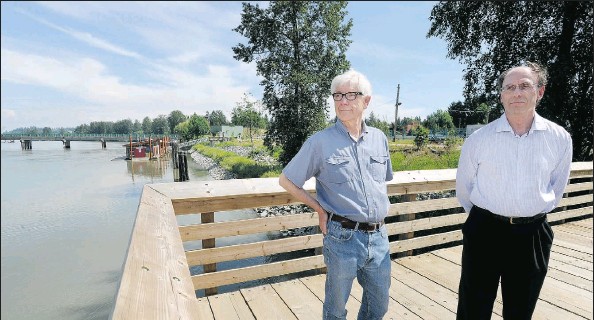Families could pay hundreds more a year when tax kicks in July 1
Andrew Duffy
Sun
The average B.C. household could take a $520 hit next year due to the harmonized sales tax, according to a model by Statistics Canada.
The change could range anywhere from $78 for households with single parents and one child to $801 for a married couple with no children, the figures show.
“There are certainly individuals and households that will feel the impact of this tax,” said Herbert Schuetze, an economics professor at the University of Victoria. “For example if you are unattached and 65 years or older we’re talking about $262 a year. That’s a considerable amount of money for some people.”
At the request of the Times Colonist, Statistics Canada analyzed 15 different household types and 15 different income classifications using its social policy simulation database and model.
The model is used by the federal government and other organizations to analyze financial interactions between government and individuals.
For the HST analysis, it synthesized four databases — the Survey of Household Spending, Survey of Labour and Income Dynamics, EI claimant history and personal income tax returns — to establish a synthetic sample of B.C. households. The weighted total of households in the sample was 1.935 million.
Statistics Canada determined what that synthetic sample spent on various items, its household income and characteristics and then followed the rules of the income tax system and applied all of the rebates, tax credits and rules surrounding the HST and GST to the sample to determine the impact of the tax.
The figures suggest the more money households bring in, the more they will pay out.
For example, a household with an annual income of $40,000 to $50,000 will pay $253 more because of the HST, while households in the $80,000 to $90,000 range will pay $1,128 more annually.
“It looks like families get hit pretty hard,” Schuetze said.
The Statistics Canada model incorporated a number of initiatives designed to offset the effects of the tax.
Those include a B.C. HST credit of up to $230 annually to low-income households, an increase to the personal tax credit, a rebate for home energy and point-of-sale rebates for a number of other items.
Yet each of the 30 household types for which Statistics Canada provided figures shows some negative impact as a result of the HST.
That does not jibe with material in the March provincial budget, although the parameters for the government’s analysis were not the same as those used by Statistics Canada.
The budget documents showed a family of four with $30,000 of income coming out ahead $535 annually, while a family of four with an income of $60,000 would spend an extra $107 a year and a family of four with an income of $90,000 would spend $178.
According to the province, single individuals with an income of $80,000 faced a $314 increase in spending, while single people with $25,000 incomes would end up $2 ahead and a senior couple with an income of $30,000 up $1 annually.
The Fraser Institute delivered a different perspective on the impact of the HST, saying the total tax bill will decrease for low and middle-income B.C. families. That’s because even though these families will pay slightly more in sales tax, those increases will be more than made up for by income tax reductions, as well as the HST credit, said Niels Veldhuis, senior economist for the Fraser Institute.
The Fraser Institute used its Canadian tax simulator, which is based on Statistic Canada’s social policy simulation database and model, and factored in provincial income tax changes announced with the HST.
Under the Fraser Institute’s model, families of two or more people with incomes of between $20,000 and $40,000 in 2011 can expect an average tax decrease of $411.
Families with incomes of between $40,000 and $60,000 will see their taxes reduced by an average of $159, the institute said. The tax break would shrink further, to an average $34 for families with an income of between $60,000 and $80,000, it said.
The model Statistics Canada used for its analysis did not take into account the effect of the HST on housing, which is significant. Previously new homes were exempt from provincial sales tax. They will be subject to the HST, although purchasers will be eligible for a provincial tax rebate.
The Statistics Canada model assumed households would spend as much as they did pre-HST, something that is unlikely to happen.
The analysis is based on Statistics Canada’s social policy simulation database and model. The assumptions and calculations underlying the simulation results were specified by the Victoria Times Colonist and the responsibility for the use and interpretation of these data is entirely that of the Times Colonist.
© Copyright (c) The Vancouver Sun












